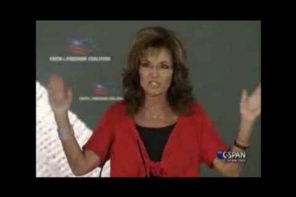I have been in the lovely north Georgia mountains for the past two days; it’s the loveliest time of year here. This is where the Appalachian Trail begins, the long cascade of Blue Ridge) Mountains nearby at the peak of their fall color, all the brilliant leaves still on the trees. It is the time for the big fall festivals as well—Apple Festival in Ellijay, Octoberfest in Helen, Sorghum and other festivals scattered about. The people, poorer the further north you go, live on the land and could not be nicer. It is striking how little the current Wall Street crises are visible on these main streets and back roads… but then, these people have been in dire economic straits for a long time and are not new to trouble. In this world, the skies could not be bluer, the colors more brilliant, the atmosphere more hopeful. Despite the fact that winter, and the election, are coming.
I have noticed one thing up here that I have seen *nowhere* else in the big city of Atlanta, one hundred miles to the south. I have seen “McCain-Palin” signs on countless front lawns up here. At home, I see the single name “McCain” in white letters on a deep blue background (usually with a link to his website), but not a hint of Governor Palin. At home, I see signs T-shirts and bumper stickers that say “McCain” and “Nobama,” but Sarah Palin is not a part of the media push for the presidency.
Why, then, is she here? And why now, when the polls (and a round chorus of boos at a recent hockey game) suggest that she is a liability among the very swing voters who will in all likelihood swing this election? In a cultural moment consumed with real-estate, the answer may well be “location, location, location.” For I have seen other pithy advertisements up here as well: on church signs (“19 Saved, More to Come,” “Righteousness and Heaven are One Way Streets”); on billboards (“Got Jesus?”); and on T-shirts (“Property of Jesus Christ”).
All this suggests that the old political truisms are true, that Palin is an asset to the shrinking Republican base that self-identifies as evangelical, fundamentalist, or born again. But the new political wisdom is that such persons of faith do not vote as a single block anymore (if they ever did), and they do not swing elections, either.
On the campaign trail, McCain is linked to Palin, but this is because he has to be; left on her own, she keeps contradicting important party policy statements. Up here, in the land were churches have lyrical geographical names (like Mount Pisgah, Mount Tabor, Macedonia, Jordan and Jericho), she can still help him… maybe.
But even among conservative Christians there are deep disagreements in this election—about the Bail Out, social policy, economic justice, the War. The two parties are now complex coalitions, not homogeneous monoliths. The more fractious coalition loses; this has been so for thirty years or more. The Republican coalition his time around—a loose hodge-podge of economic conservatives, social conservatives, religious conservatives, and ardent nationalists—is fractured almost beyond repair. And this is what Sarah Palin’s candidacy really has to teach us. The meaning of “conservatism“ is also very much in flux.


